Guadeloupe fan palm
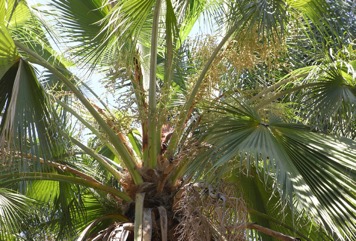
A temperate and subtropical plant. It suits Mediterranean climates. They do not suit wet humid tropical conditions. They require a dry sunny climate. They can tolerate frosts down to -7°C. It Mexico they grow to 1,000 m altitude. They can grow in most soil conditions. Once established they require little water. They can tolerate wind and salt. Young palms can tolerate full sun at an early age. They need well drained soil. It suits hardiness zones 10-12.
Synonyms
- Erythea edulis (H. Wendl.) Watson
Edible Portion
- Fruit, Berries, Seeds, Cabbage, Palm heart
Where does Guadeloupe fan palm grow?
Found in: Africa, Australia, Caribbean, Central America, East Africa, Guadeloupe, Mexico, New Zealand, North America, United States
Notes: There are about 12-16 Brahea species. They all grow in Mexico.
Growing Guadeloupe fan palm
Cultivation: Palms are grown from seed which germinate in 2-4 months.
Edible Uses: The fruit is eaten. It can be eaten fresh or made into jams and puddings. The young leaf buds are cooked and eaten.
Production: Plants are generally slow growing. The fruit are picked as they ripen. Fruit take about a year to ripen after pollination. They are harvested when fully black and becoming soft.
Nutrition Info
per 100g edible portion| Edible Part | Energy (kcal) | Protein (g) | Iron (mg) | Vitamin A (ug) | Vitamin c (mg) | Zinc (mg) | % Water |
|---|---|---|---|---|---|---|---|
| Fruit | - | - | - | - | - | - | |
| Seeds | - | - | - | - | - | - | |
| Palm heart | - | - | - | - | - | - |
Guadeloupe fan palm Photos

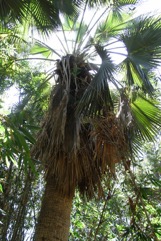
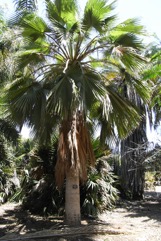
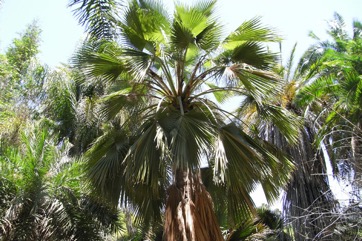
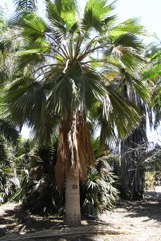
References
Balick, M.J. and Beck, H.T., (Ed.), 1990, Useful palms of the World. A Synoptic Bibliography. Colombia p 434 (As Erythea edulis), 597,
Bircher, A. G. & Bircher, W. H., 2000, Encyclopedia of Fruit Trees and Edible Flowering Plants in Egypt and the Subtropics. AUC Press. p 63
Blomberry, A. & Rodd, T., 1982, Palms. An informative practical guide. Angus & Robertson. p 66
Bodkin, F., 1991, Encyclopedia Botanica. Cornstalk publishing, p 167
Cundall, P., (ed.), 2004, Gardening Australia: flora: the gardener's bible. ABC Books. p 253
Dharani, N., 2002, Field Guide to common Trees & Shrubs of East Africa. Struik. p 284
Etherington, K., & Imwold, D., (Eds), 2001, Botanica's Trees & Shrubs. The illustrated A-Z of over 8500 trees and shrubs. Random House, Australia. p 142
Facciola, S., 1998, Cornucopia 2: a Source Book of Edible Plants. Kampong Publications, p 28 (As Erythea edulis)
Felger, R.S., Ancient Crops for the Twenty first century, in Rickie, G.A., (ed), 1979, New Agricultural Crops, AAAS Selected Symposium 38. Westview Press, Colarado. p 10
Gibbons, M., 1993, Palms. Compact study Guide and Identifier. Sandstone. p 23
Gibbons, M., 2003, A pocket guide to Palms. Chartwell Books. p 57
Haynes, J., & McLaughlin, J., 2000, Edible palms and Their Uses. University of Florida Fact sheet MCDE-00-50-1 p 4
Henderson, A., Galeano, G and Bernal, R., 1995, Field Guide to the Palms of the Americas. Princeton. p 56
Jones, D.L., 1994, Palms throughout the World. Smithtonian Institution, Washington. p 54, 149
Jones, D.L., 2000, Palms of Australia 3rd edition. Reed/New Holland. p 126
Lyle, S., 2006, Discovering fruit and nuts. Land Links. p 306
Marinelli, J. (Ed), 2004, Plant. DK. p 361
Proc. Amer. Acad. Arts 11:120, 136. 1876
Riffle, R.L. & Craft, P., 2003, An Encyclopedia of Cultivated Palms. Timber Press. p 278
Segura, S. et al, 2018, The edible fruit species in Mexico. Genet Resour Crop Evol (2018) 65:1767–1793
Standley, P. C., 1926, Trees and Shrubs of Mexico. Contributions from the United States National Herbarium Vol. 23 p 75 (As Erythea edulis)
World Checklist of Useful Plant Species 2020. Royal Botanic Gardens, Kew